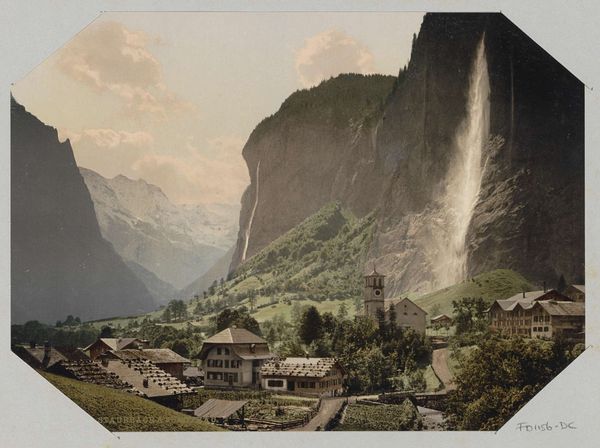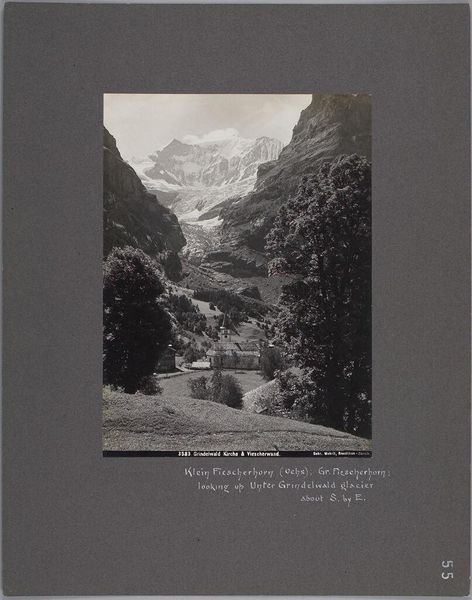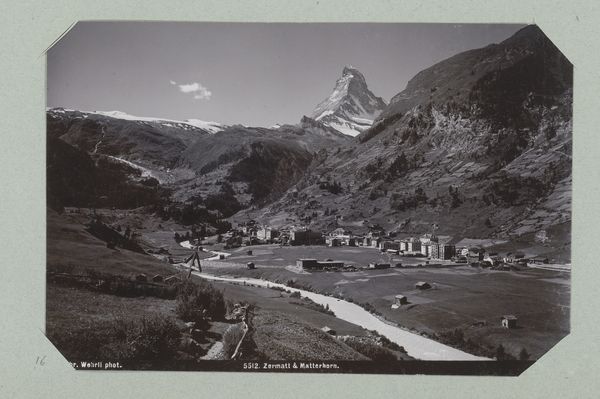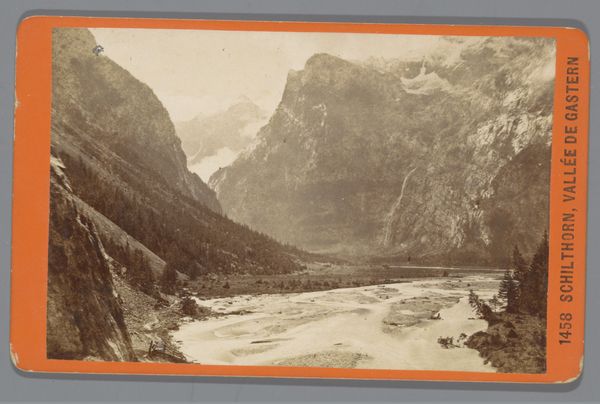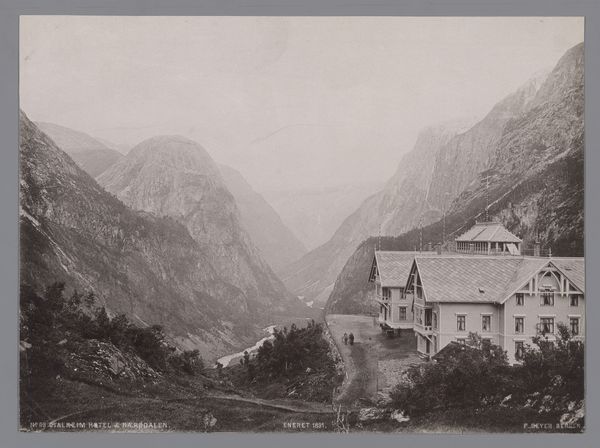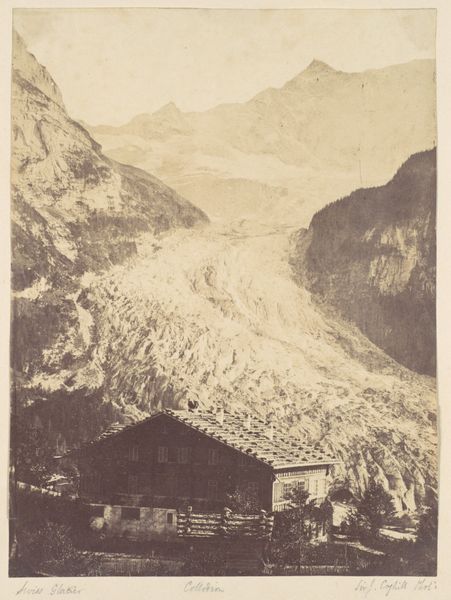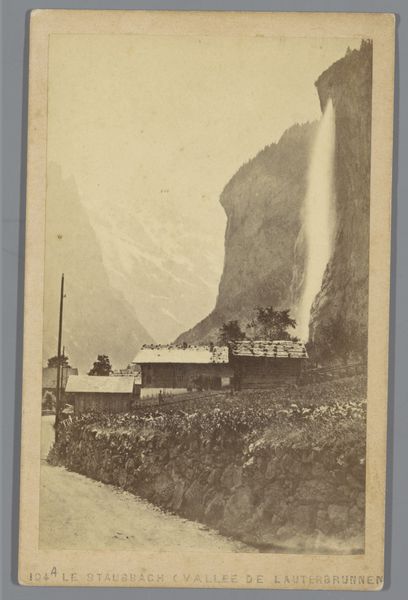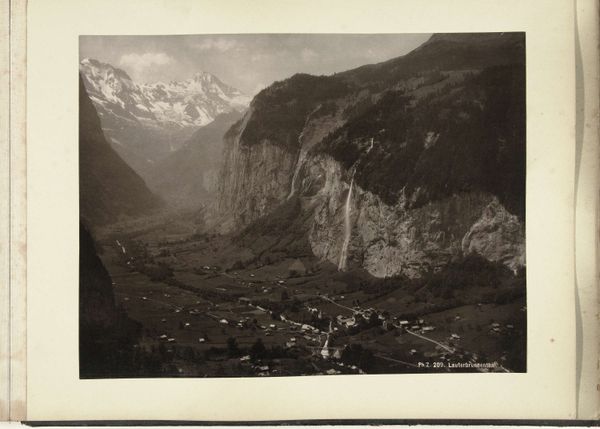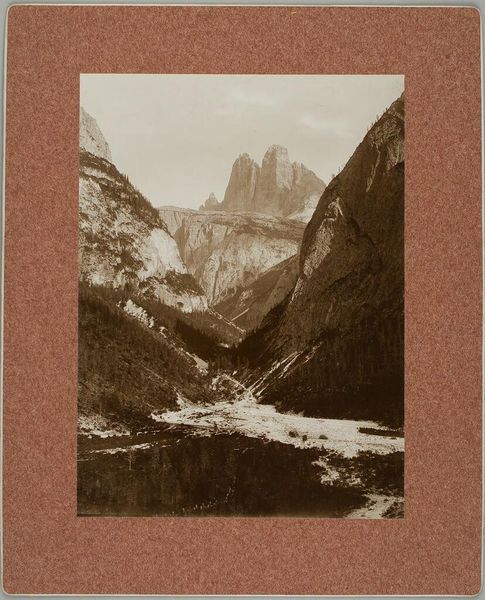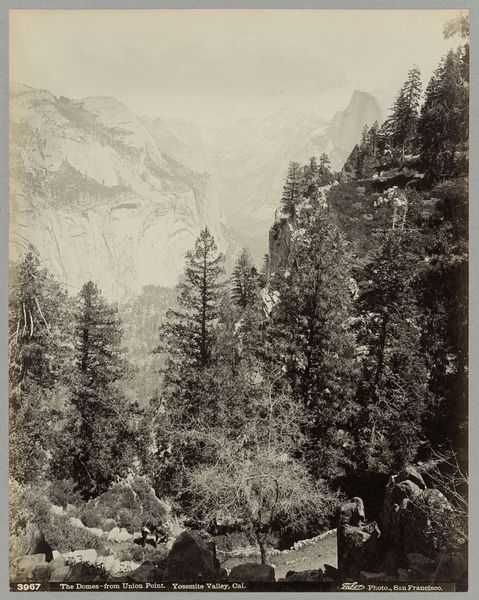
De plaats Lauterbrunnen en de Staubbach-waterval, Berner Oberland, Zwitserland c. 1890 - 1925
0:00
0:00
photography
#
pictorialism
#
landscape
#
street-photography
#
photography
Dimensions: height 161 mm, width 216 mm
Copyright: Rijks Museum: Open Domain
Curator: Before us, we have a photograph titled "De plaats Lauterbrunnen en de Staubbach-waterval, Berner Oberland, Zwitserland," attributed to Gebrüder Wehrli, and created sometime between 1890 and 1925. Editor: It's so serene! The waterfall cascading down the imposing cliff face, softened by the pictorialist style, and then that small village nestled in the valley. It gives a sense of humanity living in harmony with this powerful nature. Curator: Absolutely. Wehrli’s practice here embodies pictorialism’s aim: to elevate photography to the status of fine art through carefully constructed compositions and manipulation of the printing process. Looking at how the village, Lauterbrunnen, has developed alongside the landscape and its iconic Staubbach waterfall becomes a document of place but also an interpretation through aesthetics. We are really getting a romantic idea of Swiss culture at the end of the 19th century, early 20th century. Editor: Indeed. Consider how images of Swiss landscapes were consumed as picturesque representations. It’s critical to question what such idyllic photographs omit. For whom was this image made, and what ideas about the sublime were being conveyed? Curator: I agree; that understanding is crucial. By circulating these photographs, Wehrli wasn’t simply capturing a landscape, but also participating in a cultural dialogue, perhaps promoting Swiss tourism or reinforcing notions of the Alpine sublime and the romanticization of nature. Think of how this would influence travelers from all around to visit Switzerland, not only enjoying the view but also enjoying a romantic idea. Editor: It brings up questions about environmental exploitation and the power dynamics implicit in representing landscape for commercial means. It's not simply a snapshot. Curator: Definitely. Photographs like this acted as visual propaganda, influencing public perception and contributing to specific socio-political and economic narratives tied to Swiss national identity. Considering those social constructions allows us to dig beyond mere aesthetics. Editor: And helps us unpack not just the art of the image, but the ideology embedded within it. This isn't only a pretty landscape, but a carefully crafted vision of nature, tourism, and progress. Curator: Looking at this photograph, it is vital to appreciate how aesthetic appeal intersected with political meaning, shaping understandings of Switzerland for viewers then—and today. Editor: And understanding its enduring allure necessitates continuous critical dialogue.
Comments
No comments
Be the first to comment and join the conversation on the ultimate creative platform.
